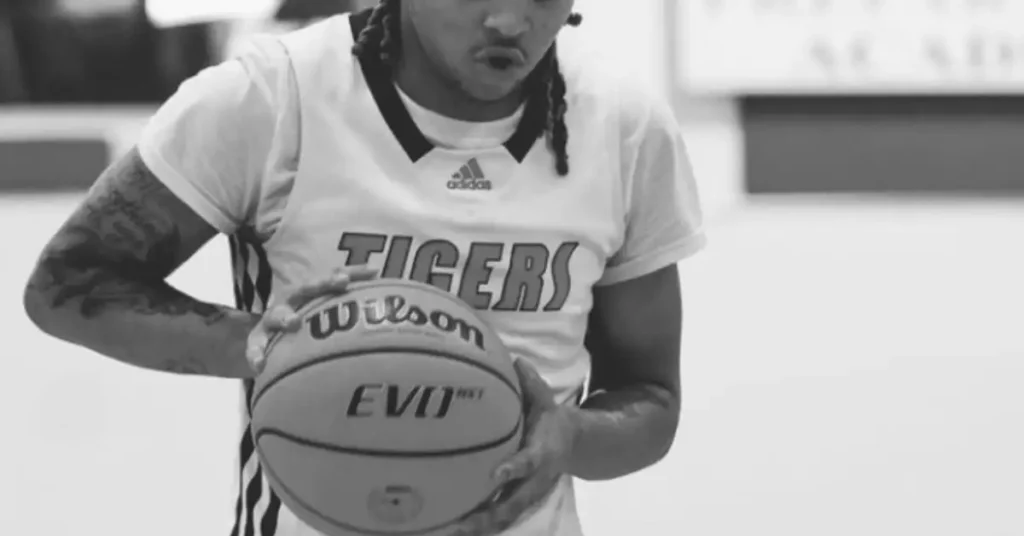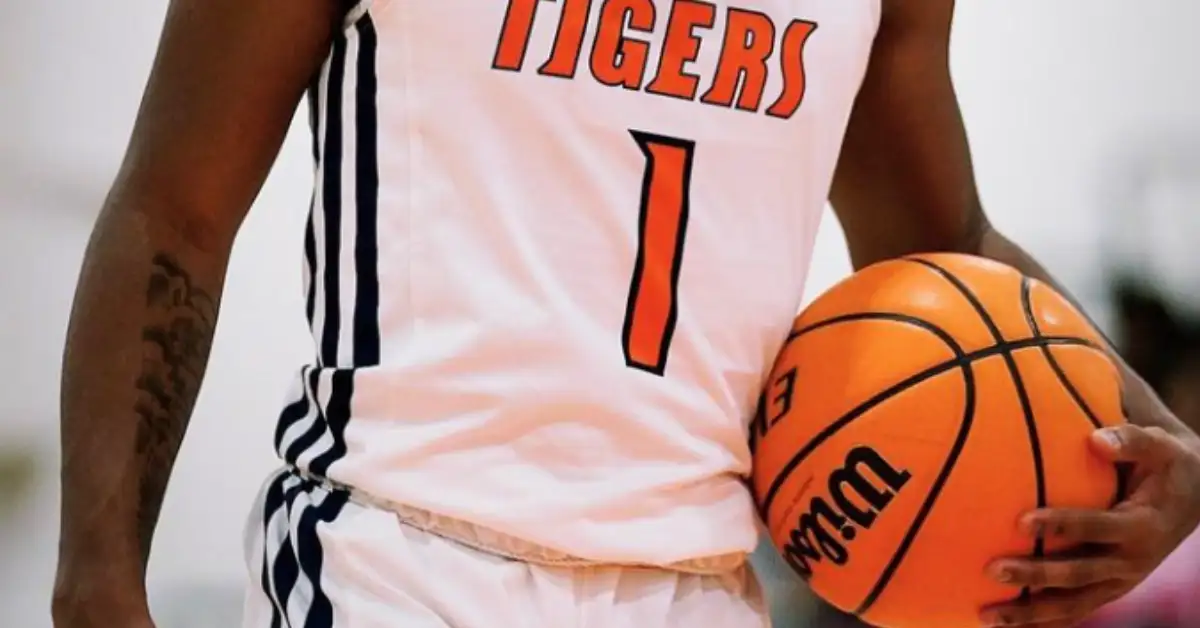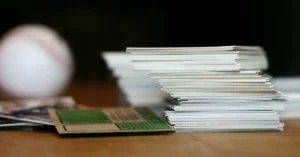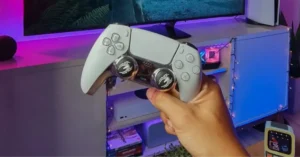With my expert guidance, discover the ingenious trick to inflate your basketball without a needle. From household items to clever techniques, learn how to air up a basketball without a needle effortlessly, ensuring you’re always ready to hit the court.
How to Air Up a Basketball Without a Needle? Basketball Inflation
When you’re looking to inflate a basketball, knowing the right air pressure is key. Basketballs typically require a psi (pounds per square inch) of about 7.5 to 8.5. This range ensures the ball bounces correctly and consistently during play. But what if you’re faced with a deflated ball and no inflation needle on hand?
First, you must understand the parts of the basketball that are responsible for air retention. The valve stem is the tiny opening where you insert the needle to inflate the ball. To prevent air leak, it must form an airtight seal after inflation.
Here’s what you need to do:
- Find the right inflation tool: Even without a needle, alternatives like compressed air cans or even a straw can act as a makeshift solution.
- Check the pressure: Without a pressure gauge, you can do a simple bounce test. Drop the ball from shoulder height; it should bounce back up to your hip.
- Patch up leaks: To handle leakage, apply sealant around the valve stem or look for puncture repair kits.
Alternatives to Traditional Inflation Methods
Compressed Air: Grab a can of compressed air, typically used for cleaning keyboards, and gently insert the thin tube directly into the valve of the basketball. Short bursts will do the trick—just make sure to insert it straight to avoid damage.
Balloon Trick: You can use a balloon as well! Here’s how:
- Inflate a balloon.
- Pinch the opening to keep the air inside.
- Use a small clamp or your fingers to secure a pen ink tube or coffee stirrer to the balloon.
- Align the tube with your basketball’s valve, and release the air slowly into the ball.
Make-Shift Straw: If you have a straw or a pen tube:
- Remove any attached ink reservoir or paper wrapping to get a clear tube.
- Insert one end into the valve.
- Blow into the other end, steady and strong. It may take a little longer, but persistence pays off!
Paper Clip Hack: For a quick fix:
- Straighten a paper clip.
- Insert the end carefully into the valve to clear any obstructions.
- Attach tape around a coffee stirrer to create an airtight seal.
- Blow directly into the stirrer or attach it to the balloon method above.
Using a Ball Pump Without a Needle

Inflating a basketball without a needle requires creativity, but it’s pretty doable with household items. The goal is to create an airtight seal between the ball and your inflation device, whether a straw or a balloon pump.
With a Straw or Pen Tube
If you’ve got a straw or a pen tube, you can fashion a makeshift needle. Simply insert the narrower end into the ball’s valve. You may need to wrap the connection with tape to ensure no air escapes. Then, attach your ball pump to the other end of the straw or tube and inflate.
With a Balloon Pump
Balloon pumps are a great alternative to traditional ball pumps. They often come with various nozzles that can fit into a basketball valve. Like the straw method, ensure an airtight seal with tape if necessary, then pump air directly into the basketball.
Utilizing Compressed Air
A compressed air can used for cleaning electronics also works. Attach the can’s straw to the valve, creating an airtight seal as best as possible. Gently press the trigger to release air into the ball. Be careful not to overinflate.
Improvised Sealing Techniques
Creating an airtight seal can be tricky, but it’s crucial for success. You can use tape or hold the seal manually. Some even use a clamp to secure the connection between the pump and the improvised needle. If necessary, apply gentle pressure to maintain the seal while you inflate the ball with your pump or air compressor.
Finding Air Sources
If you want to inflate your basketball and don’t have the traditional needle on hand, fear not! There are several friendly alternatives you can turn to, and most are readily available.
Before you get started, verify your ball’s air pressure requirements, typically printed near the valve, to ensure proper inflation.
Local Stores: Your first stop might be a local store. Many stores carry hand pumps or basketball pumps specifically designed for inflating sports balls. These often come with various nozzle attachments that can fit a basketball valve.
Bike Shops: Take a trip down to your local bike shop. They’re equipped with bicycle pumps that could be adapted to fill your basketball. Bike shops commonly assist in airing up tires and may offer the service for your basketball.
Gas Stations: Another convenient spot is a gas station. Most have air pumps for car tires; if you’re lucky, they might have an air hose that works with your basketball. Some gas stations might charge a small fee, so have some change on hand.
- Compressed Air Options:
- Can of compressed air: For a quick and efficient fix, a can of compressed air is often used to clean keyboards but can also save the day for your basketball.
- Air compressors: These are powerful and can quickly fill your ball, but be cautious to avoid overinflation
Inflation Without Inflating Tools

Using Compressed Air Devices
If you have access to a compressed air can, this can be a lifesaver. Compressed air is not just for cleaning keyboards; it can also inflate your basketball. Direct the compressed air into the ball carefully with a nozzle that fits the valve. Ensure the fitting is snug to avoid air leakage.
Creative Methods with Household Items
Believe it or not, your hand strength could turn everyday objects into inflation devices! With a straw or a small tube, you can blow air into the ball’s valve after ensuring it’s tightly secured with tape to prevent air loss. A paper clip can hold the valve open, or you might fashion a makeshift valve tool from a pen to connect the straw. This method requires patience and a bit of lung power.
Seeking Professional Assistance
Turning to a mechanic or a local bike shop could be your best bet when all else fails. They often have the necessary tools like a compressor or a hand-held pump that can be used without a needle and will help you with the task for a small fee or even for free.
Measuring and Adjusting Air Pressure
When inflating your basketball without a needle, getting the correct air pressure, typically measured in pounds per square inch (psi), is crucial. Most basketballs have a recommended pressure of 7.5 – 8.5 psi. To check the pressure, you’ll need a pressure gauge. If you don’t have one, a good rule of thumb is that a well-inflated basketball should bounce back up to about chest height when dropped from above head height.
Here’s what you need to do:
- Locate your basketball’s: air valve.
- Attach the pressure gauge: to get the current psi reading.
- If the psi is below the recommended level,
- Use a compressor or manual pump attached with a nozzle to add air.
- Turn on the compressor to build up pressure before filling.
- Use a compressor or manual pump attached with a nozzle to add air.
- If the psi is below the recommended level,
- Inflate slowly: and check the pressure frequently.
- Add short bursts of air to avoid overinflation.
Remember:
- Basketball feeling soft? Add more air.
- Too hard? Let out a tiny amount until you reach an optimal feel.
- No pressure gauge? Gently squeeze the basketball:
- It should give a little but not feel squishy.
- A proper bounce test will also help ensure the right pressure.
Preventing Damage to the Basketball
Proper inflation is critical to maintaining the longevity and durability of your basketball. It’s crucial to avoid overinflation, as too much pressure can cause the material to stretch beyond its limits, potentially leading to a burst. Conversely, an underinflated ball can harm the ball’s structure and impair your play, affecting optimal performance.
To protect your basketball:
- Check the Recommended PSI: Before inflating, find the recommended pounds per square inch (PSI) typically printed around the valve or in the user manual.
- Invest in a Pressure Gauge: Use a pressure gauge to measure the ball’s pressure accurately.
- Inflate Slowly: Add air in small increments, checking the pressure frequently.
- Feel Test: After adding air, press your palms into the ball. It should give a little but not feel hard.
- Rotate Regularly: Evenly distribute wear by rotating your basketball after each inflation.
- Storage: Keep your basketball in a cool, dry place when you’re not using it. Extreme temperatures can affect inflation levels and material integrity.
Playing Considerations After Inflation
After successfully inflating your basketball without a needle, checking a few things before diving into the game is essential.
- Bounce: Give the ball a few test bounces on a solid surface. It should rebound to an adequate height, typically reaching about knee level when dropped from above your head. Additional air may be needed if the bounce feels inconsistent or too low.
- Firmness: Press your palms against the basketball to gauge its firmness. Your basketball should be firm but not rock-hard. Too much firmness can affect the ball’s handling and may even make it painful to play with.
- Feel: How the ball feels in your hands is crucial to your game performance. Hold and squeeze the ball — the surface should provide a sensation of resistance and a slight give while maintaining its shape.
- Dribbling: Take the ball for a spin on the court with some dribbling drills. The ball should respond well to your dribbles, and you should be able to control the pace and height of the bounce with ease. If dribbling feels off, adjust the air pressure accordingly.
- Grip: Inspect the basketball’s surface. A properly inflated ball will offer a good grip, allowing for precise control and handling during play. If the ball feels slippery or too hard to grip, the inflation might not be optimal.
Maintaining Your Basketball

Proper maintenance of your basketball is crucial for a game-ready performance.
Here are friendly tips to ensure your basketball remains in top shape:
Storage:
Always keep your basketball in a cool, dry place when not in use. Extreme temperatures can affect the ball’s structure and air retention, so avoid leaving it outdoors or in direct sunlight for prolonged periods.
- Best Practices:
- Indoors: Store in a closet or a shelf.
- Avoid Heat: Keep away from heaters and direct sun.
- Dry Area: Wet conditions can damage the ball’s exterior.
Ease of Use:
A well-maintained basketball offers better grip and control during play. Regularly clean the ball with a damp cloth to remove dirt and sweat. This keeps the ball’s surface tacky, allowing for optimal performance during dribbling and shooting.
Benefits:
Maintaining air pressure ensures consistent bounce and feel. It also prolongs the lifespan of your basketball, making it a reliable companion for your games.
Precautions:
Regularly check your basketball for any signs of wear or damage. Minor issues can escalate if left unattended, leading to a poor playing experience or the need for a replacement.
- Quick Checks:
- Inflate correctly: Use proper pressure as per the manufacturer’s guidelines.
- Inspect Surface: Look for cuts or abrasions.
For Basketball Players:
Your performance on the court can be significantly improved by proper ball maintenance. Taking these simple precautions and storing your basketball correctly ensures that the ball is always game-ready, just like you! Remember, the ball is an extension of your skill, so give it the care it deserves.
Additional Tips for Best Practices
When trying to inflate your basketball without a traditional needle, it’s essential to follow a few extra steps to ensure you do it correctly and safely. Here are some friendly pointers to aid you in the task:
- Check the Ball’s Condition: Before you begin, examine your basketball for any damages like cracks or holes. Repair these first to maintain proper air retention.
- Step-by-Step Patience: If you’re using a step-by-step guide, take your time with each step. Rushing may lead to mistakes—and a deflated basketball.
- Tips for Using Alternative Tools: If using a straw or tube from a bike tire, ensure it fits snugly into the valve. You don’t want to lose air as you’re pumping.
- Gauge the Pressure: Without a gauge, you can use the squeeze test. If the ball gives slightly under pressure, it’s likely at the correct inflation.
- To Release Air: If overinflated, gently press the valve system until you reach the desired pressure. Be careful not to depress too hard and release too much air.
Remember, while these alternatives to a needle can work, they might not be as efficient as the traditional method. Investing in the right tools for future use is always a good move.
| Don’t Overinflate | Pressure Check |
|---|---|
| Avoid over-pumping | Use your hands to gauge pressure |
FAQ
How can I put air in my basketball?
Use a basketball pump with a needle attachment. Insert the needle into the air valve of the basketball and pump air until it reaches the desired pressure. Be sure not to overinflate the ball.
How do you inflate a ball?
Attach a needle to a pump, insert the needle into the ball’s air valve, and pump air until the ball reaches the desired pressure. Monitor the pressure gauge on the pump to avoid overinflation.
How do you get a needle out of a basketball?
Carefully twist and pull the needle straight out of the air valve. Avoid bending or forcing the needle, as this could damage the valve or cause it to become stuck inside the ball. If the needle gets stuck, gently wiggle it while pulling until it comes out.
If you enjoyed reading about the topic: how to air up a basketball without a needle, leave a comment and stay updated on Pinterest for more exciting basketball news.
Leave me a comment and make sure to also check out Blue Light in NBA.






